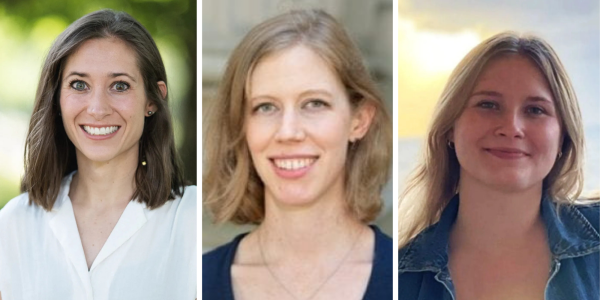As many of us on campus relaxed over winter break, Casey O’Callaghan was celebrating a major achievement. The National Endowment for the Humanities recently awarded O’Callaghan, a professor of philosophy and philosophy-neuroscience-psychology, a prestigious fellowship for university teachers. The $50,400 award will support his current book project, Seeing What You Hear: A Multisensory Philosophy of Perception. He sat down to answer a few questions about the prize and his research for the Ampersand.
Where were you when you found out you'd won the fellowship? How did you feel and what did you do?
I checked email over a morning cup of coffee, saw the subject NEH Fellowship Offer, and was stunned. After opening the email, I spent at least a few minutes adjusting to the idea that I’d been offered the fellowship, letting it sink in.
Have you applied for an NEH grant before? I understand the process is pretty rigorous.
I have never applied for an NEH Fellowship before, though I’ve participated in two NEH Summer Institutes. I received a tremendous amount of help from my colleagues in the Department of Philosophy, John Doris and Julia Staffel. Each read multiple drafts of my proposal, offering invaluable critical feedback that helped me to communicate my project to a general humanities audience.
Then, a few months after submitting the application, I participated in the Center for the Humanities Grant Writing Program. I found the grant writing program helpful in understanding that grant writing is a very different form from the other types of scholarly communication typical in specific fields. I also received helpful feedback on a successor to my NEH proposal, which I submitted to other fellowship competitions.
I read that you plan to use the award to work on your latest book project. Would you mind explaining a bit about this project?
Historically, how we understand perception and perceptual consciousness has been shaped to a remarkable extent by attention to vision, in the sciences and in humanities. Recently, there has been a turn to considering other senses — hearing, touch, taste, smell, and bodily awareness — to illuminate the nature of perception. This, however, still risks failing to appreciate the many ways in which our senses interact with each other. Even visual consciousness is reshaped by influences from hearing and touch. My book is about how such interactions reshape how we understand perception and how we experience the world.
What do most people misunderstand about the senses?
Try the following experiment. Pinch your nose and taste a jellybean. You’ll find it tastes like sugary goo. Now, unpinch your nose. The sudden burst of flavor — cherry, root beer, bubblegum — demonstrates the extent to which olfaction impacts what we think of as taste. Such effects are pervasive, and illustrate how much what we think we experience with one sense depends on the others. In fact, these aren’t just illusions. They reveal how coordination among senses enhances and make perception more reliable.
What first interested you in this area of research?
The problems of color and color perception encapsulate what I find most interesting in philosophy. I turned to sound and audition for a different sort of angle on these types of questions. I eventually found that in order to understand auditory perception adequately, one must confront the ways in which it interacts and coordinates with other senses, such as vision. Audition can’t be understood fully in isolation. This led me to more general questions about the multisensory nature of perception and consciousness.




